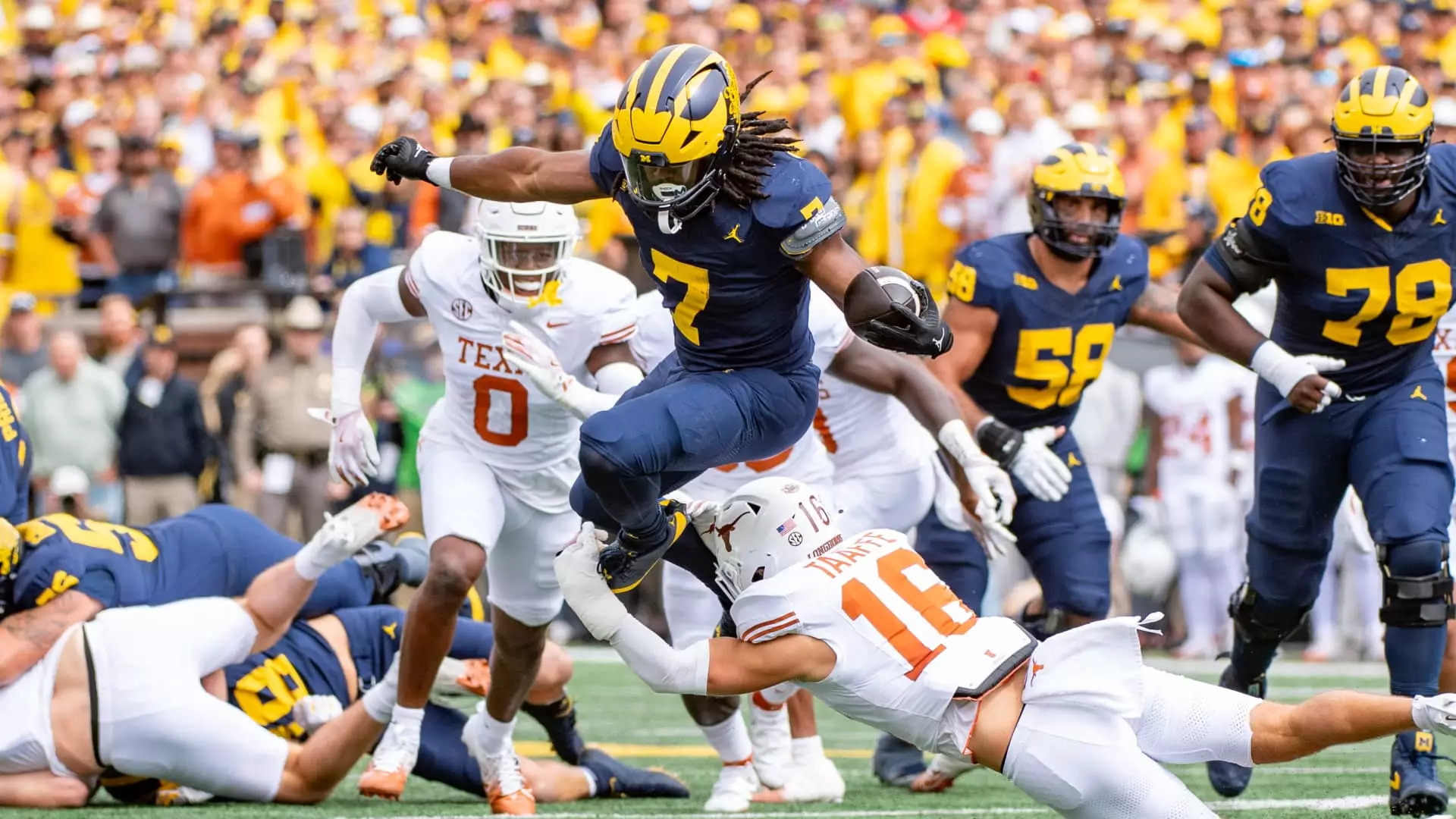The initiation of a 12-team College Football Playoff (CFP) format has radically transformed the landscape of college football, particularly influencing viewer engagement and advertising revenue for media conglomerates such as Disney. This innovative shift offers fans increased involvement, cultivating a sense of investment among a broader array of teams and their supporters. As a result, Disney’s television platforms—including ABC, ESPN, and ESPN2—are experiencing a resurgence in viewership ratings, tracking towards their highest numbers since 2016. As we dive deeper into this phenomenon, it becomes clear that increased fan engagement is driving not just viewership, but more engaged interactions with advertisements during the game broadcasts.
With the new playoff format implemented, the stakes have undeniably risen for many college football teams. This has become evident during crucial competitive weeks, particularly during Thanksgiving, where storied rivalries unfold. Established matchups like Ohio State vs. Michigan and Texas vs. Texas A&M have sparked fervent interest, and media executives like Kevin Krim, CEO of the advertising data analytics firm EDO, anticipate substantial spikes in viewer engagement with commercials throughout these high-stakes contests. Krim attributes this rise in enthusiasm not only to the quality of the games but also to the significance shaped by the expanded playoff structure.
The trend is particularly noteworthy given the broadcasting landscape’s competitive turmoil. With traditional pay-TV subscriptions declining, media companies have recalibrated their strategies, increasingly focused on streaming platforms. Advertising emerges as a critical lifeline, and Disney has noted an uptick in demand for advertising partnerships surrounding college football. According to Disney’s insights, ad engagement during its football broadcasts is markedly higher than the industry average, suggesting that audiences are not just passive viewers but are actively interacting with the products presented during ad breaks.
The metrics surrounding advertisement performance on Disney networks bolster the narrative of a flourishing advertising ecosystem amid renewed interest in college football. Remarkably, consumers have shown an 11% greater likelihood to engage with commercials aired during games on Disney platforms compared to other competitive networks. This advantage translates into a more robust market for advertisers, affirming the significance of college football as a prime medium for brand outreach. Insights indicate that companies ranging from consumer goods like Jimmy Dean to pharmaceuticals like AbbVie’s Skyrizi witnessed substantial consumer engagement, reflecting the cultural resonance that college football commands in American society.
Moreover, historical comparisons underline the success of this year’s advertising campaign. Last year’s advertising slots during college football games proved to be 93% more effective than similar programming on rival networks. As the NFL continues to dominate the television ratings, college football retains a strong second place, making it a coveted advertising space.
As the dynamics of college football evolve, Disney has increasingly found itself in a position of demand for its advertising spaces. The network sold out ad spots through the conference championship games and is reporting high occupancy for college playoff slots, asserting the strategic advantage of its programming. Furthermore, media rights related to college football have escalated significantly. For example, Disney has invested approximately $300 million annually for rights to Southeastern Conference (SEC) games, underscoring the competition and financial stakes involved.
As sports media deals skyrocket in value, highlighted by the recent $7.8 billion agreement between ESPN and the CFP through to the 2031-32 season, one can only expect continued growth in this sector. The expansive reach of college football, which draws significant audiences eager for sponsorships and commercials, seems poised for sustained prominence in the media landscape.
Considering the gradual shifts within media consumption patterns, live sports have emerged as a cornerstone for successful advertising strategies. In an era where viewers are selectively migrating away from traditional cable offerings, the importance of engaging programming, particularly live sports, remains undeniable. Football, whether at the professional or collegiate level, boasts some of the most robust engagement rates, resulting in inflated advertising prices.
The considerable reach of college football, alongside its ability to generate engaged audiences during game broadcasts, positions it as a vital component for media networks like Disney. The narrative surrounding college football, particularly with the expanded playoffs, illustrates how strategic adaptation to changing viewer preferences can not only stabilize but also revitalize media companies moving forward.
The expanded College Football Playoff format has not only reshaped the game on the field but has led to significant shifts in viewer interaction and advertising dynamics. The evolving media landscape is not just about games; it’s about the engagement they generate, making college football an essential component of modern-day television strategies.

